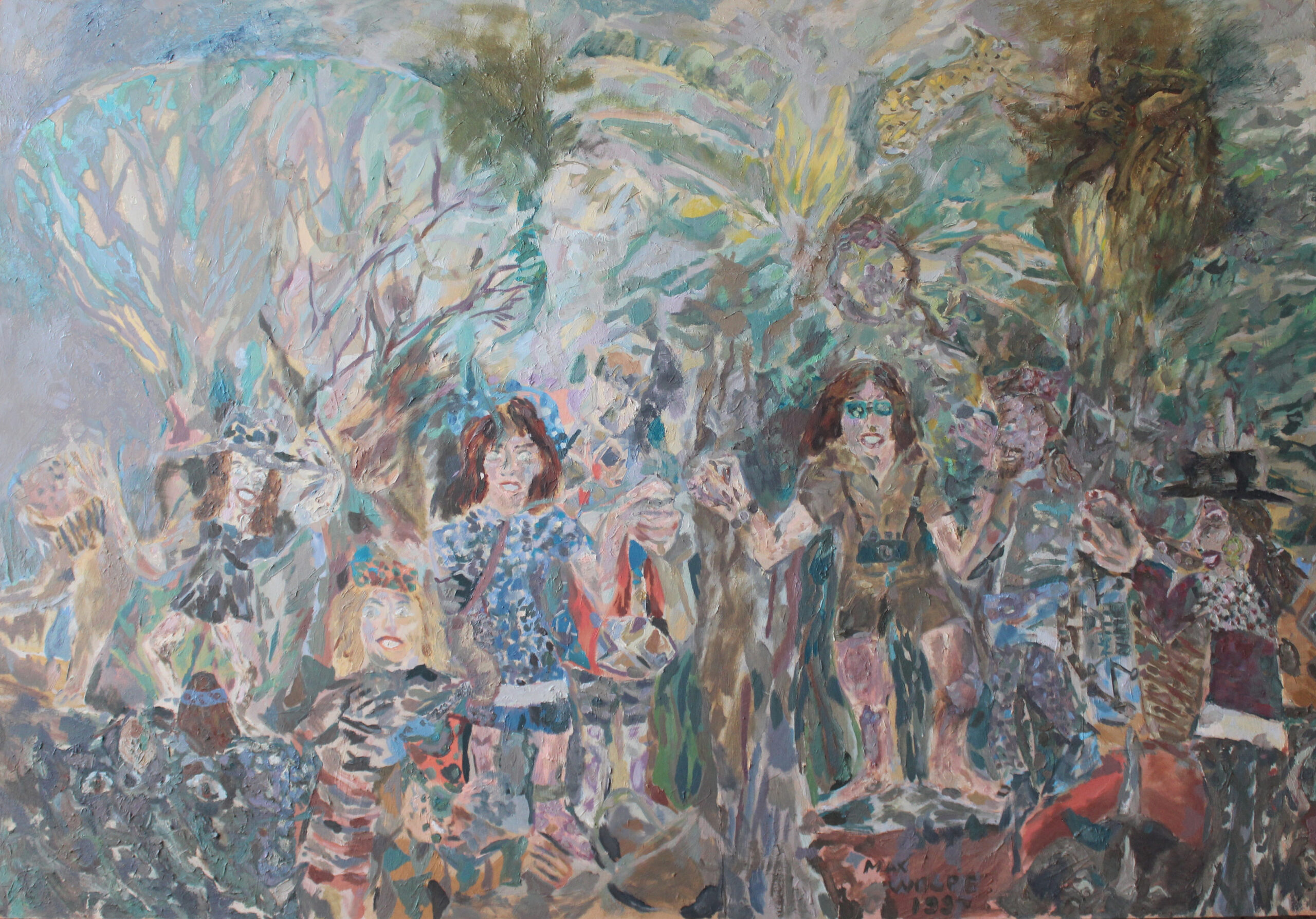Max Wolpe
Bohemian Safari
2 July - 5 September 2025

I am very pleased to present the second exhibition at Old and Interesting Art: the maverick South African artist Max Wolpe (b.1953). Wolpe has recorded his life in Cape Town, South Africa, over the last fifty years through painting. His image-making consists of scenes of chaotic city life, imagined scenarios with a set of stock characters, and narratives of societal interplays. He is drawn to cityscapes, the carnivalesque, and the raucous hum of crowds. At the centre of Wolpe’s practice is himself; the nexus of his painting is essentially his visionary observation of both real and imagined scenes. It is a form of first-person painting, akin to Edouard Vuillard, characterised by chaotic brushstrokes enveloped in pattern, which becomes a powerful vehicle for Wolpe’s intense feelings.
His paintings are visions of his world. As the headline reads in an article from the South African Jewish Report in 2018, Wolpe ‘is no deranged prophet, but a strong and courageous artist.’ He is far from the mainstream, hard-edged South African contemporary art world, yet his flurried and frenzied paintings are a potent reflection of Wolpe as one of Cape Town’s most idiosyncratic denizens.
Although existing as something of an outsider, rejected by contemporary art paradigms, he is certainly not a naive artist. Wolpe paints with a visual literacy that affords him the status of a master. He paints with great truth, his expressionistic output seemingly the only way he can accurately express himself, albeit riddling.
Wolpe is obsessed with the world of Bohemia. He grew up witnessing the bohemian life of the artists and friends that his father mixed with. Max still inhabits the house his father, the highly distinguished art dealer, Joe Wolpe lived in. Joe Wolpe nurtured some of South Africa’s art greats like Irma Stern and the somewhat forgotten Fred Page.
Max Wolpe’s work is deeply expressionist in tendency and at times reminiscent of Chaim Soutine. His paintings can be both murky and dark, with impasto, but also have a green juvenescence. Wolpe’s work has a certain connection to the London School, with their direct observational feeling, in the manner of Leon Kossoff, yet the piercing whimsy speaks to something completely otherwise.
This is the first time Max Wolpe’s work is being shown outside of South Africa, and I am very pleased to place a spotlight on an artist who is uncompromisingly himself — singular and strange.